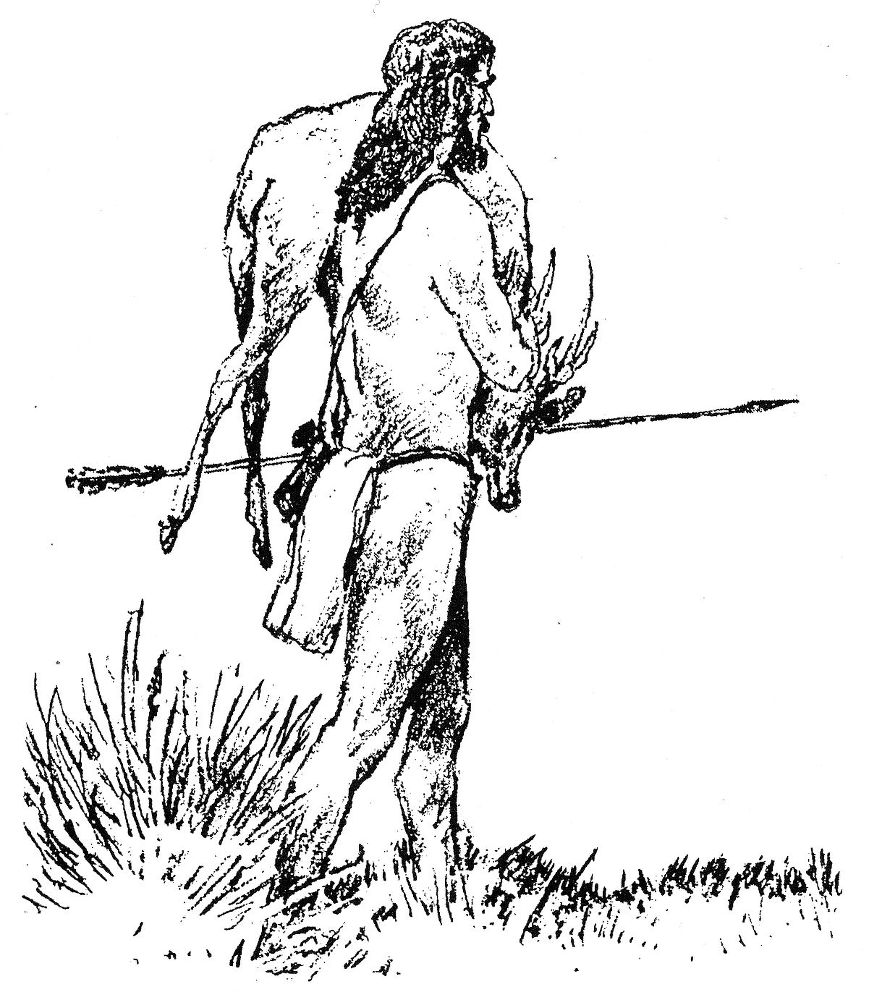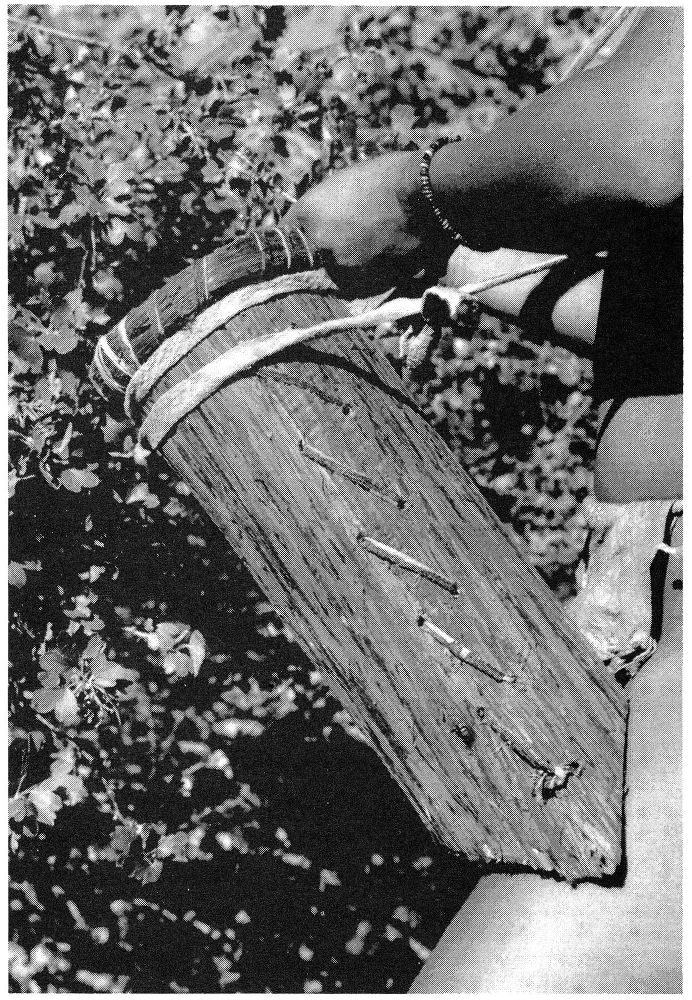Left alone, the human organism has the ability to select its own perfectly balanced diet. Food cravings triggered by physiological and psychological circumstances are nature’s way of telling you what your body needs. The trick is to learn to read them. Since the body needs food fuel every four to five hours, people who skip meals or let too much time elapse between them may unintentionally set themselves up for cravings by allowing blood sugar levels to drop. Then we mistakenly go for a fat fix which is not the best choice.
So here we are, in an unprecedented evolutionary situation, surrounded by endless supplies of fat, sugar and salt undiluted by fiber and never exposed to the needed, corrective shortage unless we impose it on ourselves. And this progress, foolish as it is, continues to do us great damage.
But just changing our diet to bread, vegetables and fruit and lean meat won’t completely overcome the problems associated with what we eat today. For example, the bread we buy in stores isn’t really bread at all. Real bread is made from grains ground into flour, mixed with yeast and salt and sometimes a little milk. What is sold in stores disguised as bread is synthesized from what is left of the grain of wheat after everything worthwhile is removed—wheat germ, bran, and most of the vitamins and minerals. The starchy powder that remains is mixed with chemicals like calcium bromate, sodium stearyl fumarate, and tricalcium phosphate, to name a few. As a touching gesture, federal law requires bakers to add hard-to-absorb synthetic vitamins to replace the 24 or so nutrients removed in the milling process.8 Is it surprising that the United States has the highest rate of colon cancer in the world?
There are several ways of restoring health to our daily diets. First, we could switch to the staple menu of rural Africans and Asians. That means ground corn, boiled bananas, freshly dug potatoes, rice and plenty of beans. Most Americans would be reluctant to make that kind of change. Or, we can adapt the modern diet so that it prolongs our lives—and the lives of our children—instead of shortening them. We can thread our way through the maze of potentially lethal, fresh-from-the-factory, simulated foods and eat the way human beings were designed to eat. We can nourish our bodies the way men and women nourished theirs for 50,000 years—before heart attacks, colon cancer, diabetes, and all the other degenerative diseases that we take for granted felled millions of innocent victims.
By picking and choosing the best from their life style along with the best from ours, we should be able to forestall, or even prevent, many currently prominent diseases and thus live longer, healthier lives.
Nor does our diet have to be boring. Dr. Leslie G. Freeman said of Cro-Magnon peoples at El Juyo Cave in Spain, “they lived well,” as he and his colleagues dined on grilled oysters, salmon, mountain goat, and venison, along with wild greens and a fermented honey drink, a menu based on research at the cave. Among the finds were more than 1,000 identifiable seeds of 45 genera, brought from miles around. The plant remains (not fossilized, but protected by encapsulating clay for 14,000 years) also included grasses used for bedding or teas, wild pansy, rosemary, and raspberry.9
Evolution gave us a reasoning brain and if we can figure out why primitive people didn’t get heart attacks, we should be able to modify our own hand-to-mouth existence. The struggle is our evolutionary legacy.


Wendy Schweitzer demonstrates convenient use position of bark basket resting on thigh while harvesting Golden Currents. (Photo by Jim Riggs)
Jim Riggs
Barking Up the Right Tree
Juniper-Bark Berry Baskets
. . . while picking currants one day, I suddenly realized that the curved basket bottom meshed perfectly with the opposite curvature of my upper thigh. This use-position, with the strap around neck and one shoulder, props the mouth of the basket upward and forward and frees both hands to rapidly and efficiently strip berries into it. How neat!
After attending the 1990 Rivercane Rendezvous in northern Georgia in mid April, I made a trip up into North Carolina to visit my old pal Doug Elliott. Having made dozens of one-piece folded and laced bark baskets using western juniper (Juniperus occidentalis) here in Eastern Oregon, one of my goals while in the Southeast was to gain experience making some tulip poplar baskets to note firsthand the similarities or differences in the materials and process. I figured I could find no better teacher than Doug—his house is bedecked with literally hundreds of tulip poplar baskets, more styles, sizes and forms than any one person could seemingly imagine, let alone produce!
During a marathon day-hike through his forest (alien to Western me “What’s this Doug? And this? What’s this used for?”), we found a young tulip poplar freshly cut and left by loggers (it had been in their way). Later in the hike we fortuitously encountered a hickory sapling bruised, scarred and bent over by loggers. Doug’s eyes lit up (Well, his eyes are really never un-lit!) and he showed me how to strip long narrow lengths of bark from the base to the top of the tree. We then split outer from inner bark, and coiled and kept the latter for our lacing material.
We also cut through several outer growth rings of the wood proper at the base of the tree and peeled away splints for the basket rim reinforcement hoops. It pleased us that all necessary materials for several baskets had been salvaged from others’ waste. Back at Doug’s place we began the actual basket construction.
Aboriginal Bark Containers
In the arid Northern Great Basin and semi-arid interior Columbia River Plateau regions of the Pacific Northwest, most of the native-produced folded bark baskets I’ve seen appear to be made of western juniper. While I’ve not experimented with them yet, the Common Juniper (Juniperus communis), the Rocky Mountain juniper (Juniperus scopulorum) and perhaps others should also work. In the moister forests of northern Idaho and western Montana westward to the Cascade Mountains and coasts of Oregon, Washington and British Columbia, natives used mainly bark of the western red cedar (Thuja plicata), occasionally Alaska yellow cedar (Chamaecyparis nootkatensis), and minimally a few others not identified in my available literature. (For an illustrated informative article, “Cedar Bark Baskets” by Mary D. Schlick, describing contemporary rejuvenation of the craft by a native Yakima man, see American Indian Basketry Magazine, Vol. IV. No. 3. Issue No. 15.)
To my knowledge, the actual antiquity of aboriginally produced bark containers in the Northwest is not known. Standing red cedars in the Southern Washington Cascades showing old bark removal scars—ostensibly peeled for one-piece, folded baskets—have been dated by growth ring counts to a little over 200 years ago. Most museum specimens with data seem to be of post-contact, ethnographic acquisition: although I’ve not undertaken thorough research, I know of no bark containers of this style that have been found in an archaeological context and subsequently dated. Exhaustive research into aboriginal, one-piece, folded bark containers is obviously a master’s thesis begging to happen, but if you really want to just make your own bark baskets of juniper, read on!
Tools for the Task
As an aboriginal process, construction of a juniper bark basket from selection and procurement of the raw materials to the finishing touches, encompasses a number of well-defined sequential steps, each facilitated by the employment and application of appropriate knowledge, tools and action.